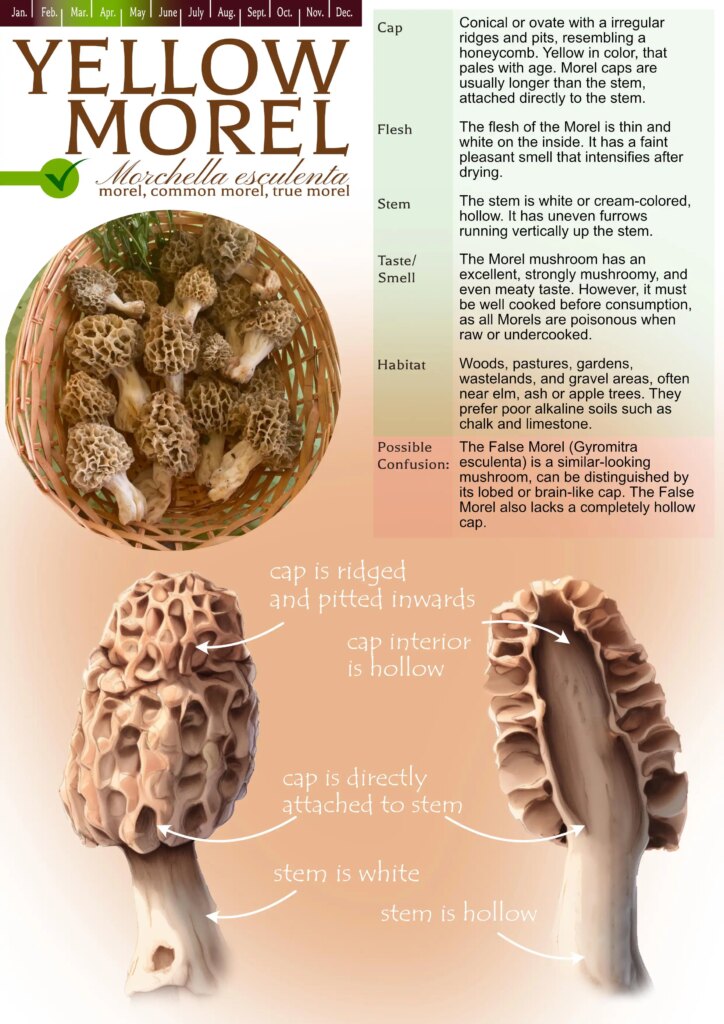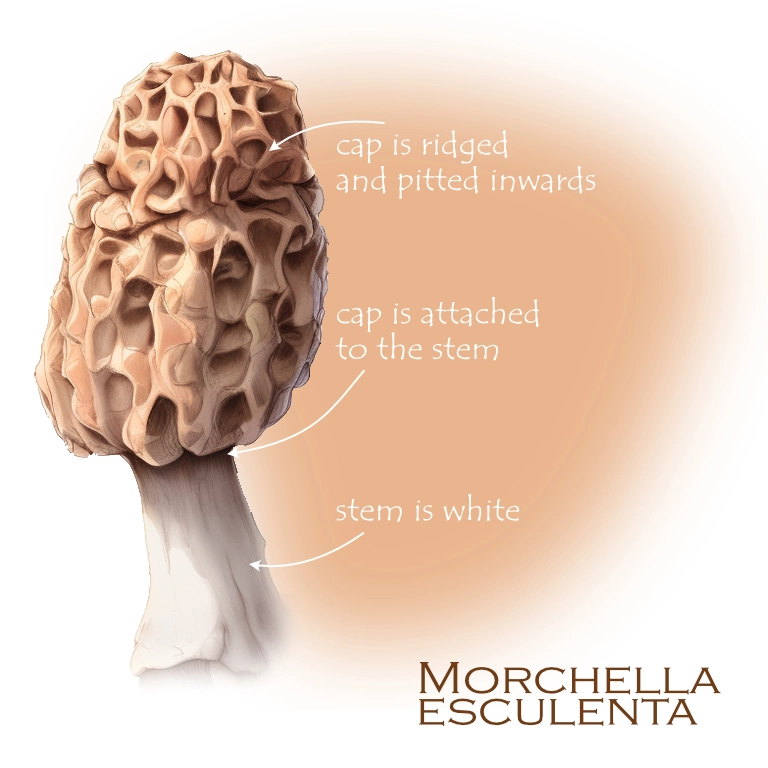
Table of Contents
Morel mushroom foraging
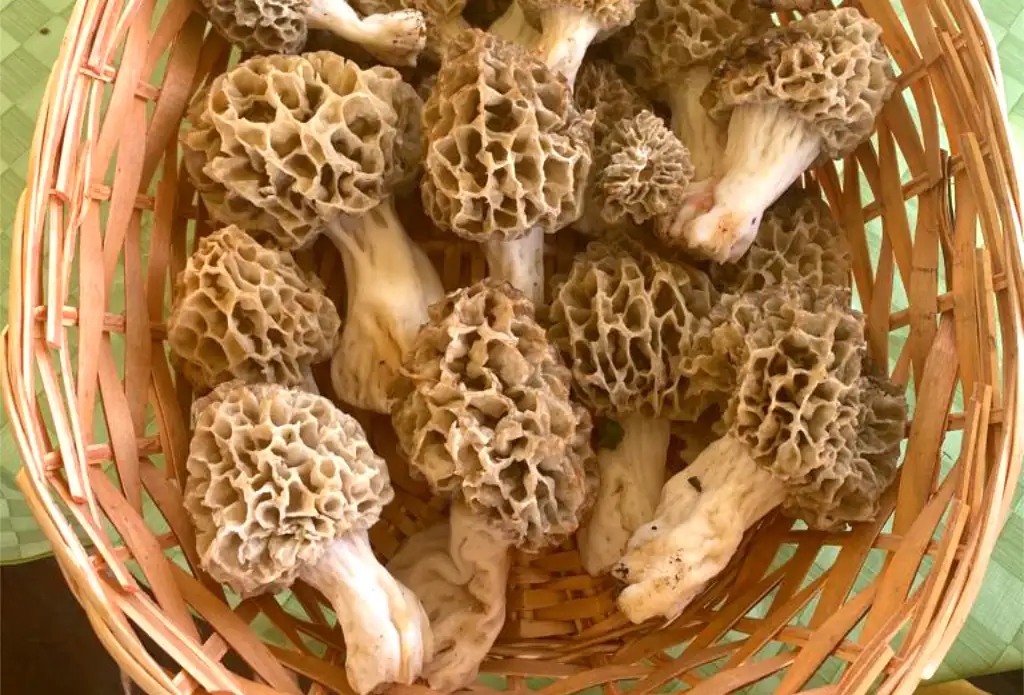
The hard-to-find but delicious true morel mushroom I want to rave about is none other than the morel, also known as the common morel, true morel or yellow morel.
For any amateur mushroom hunters out there, identifying morels is no easy task and can be extremely precarious if you don’t know what you’re doing.
So, always exercise the utmost caution by morel mushroom identification and if there’s even a seed of doubt, do not pick it! Ask an expert forager or just leave that mushroom be. Better safe than sorry.
Where to find morel mushrooms?
Morels thrive in damp soil and are often found in wooded areas where there are plenty of dead and rotting trees.
Experienced hunters look for ash trees. Some say that the best place to find morels is where wild garlic grows.
Morels buddy up with specific trees like elms, ashes and apple trees.
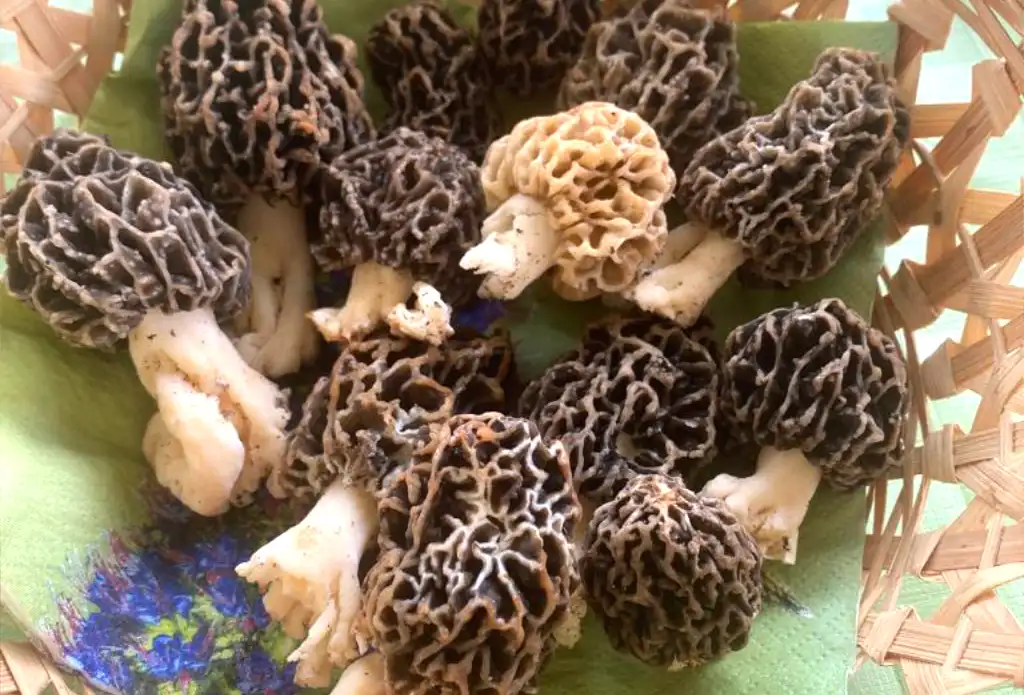
When to Find Morel Mushrooms?
Spring is the best time to looks for morel mushrooms. Morel mushroom season is, depending on where you live, the springtime, anywhere from March through May for most places.
When do morels grow? Morels come out after a period of rain followed by steady, mild temperatures. This type of weather conditions is ideal for morel mushrooms growth.
According to old-timer wisdom, morels won’t be far behind when you see the first yellow dandelions of spring. In some regions, there’s about a 10-day lag between dandelions showing up and the first morels popping.
To determine if you have a real Morel mushroom, as opposed to a look-alike or imposter False Morel:
- the cap shape: Morel mushroom caps have a distinctive honeycomb appearance, are cone-like or oval, and are attached directly to the stem. False Morels, on the other hand, have caps that dangle from the stem and lack the hollow center. Identifying Morel mushrooms becomes second nature with practice. If there is any uncertainty while foraging, it is best to pass them up.
- Real Morel mushroom, as opposed to a look-alike or imposter False Morel, the cap attaches to the stem, and together with stem is throught hollow inside.
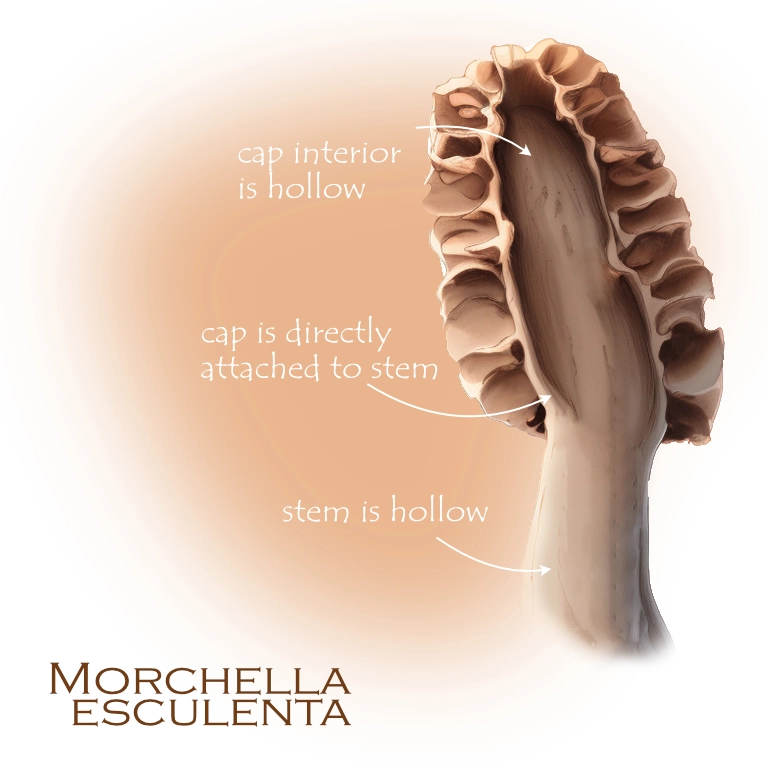
Characteristics of the Morel mushrooms – morel mushroom foraginig:
| Parts | Description | Speed check |
|---|---|---|
| Cap | The cap is conical or ovate with a network of irregular ridges and pits, resembling a honeycomb. It is yellow in color, which pales with age and has lighter ridges. It can also discolor to rusty orange when bruised or with aging. The size and color of the cap can vary greatly among different varieties of Morels. Morel caps are usually longer than the stem, attached directly to the stem. False Morels, on the other hand, have caps that hang freely from the stem and are not hollow inside. | honeycomb-like conical or oval yellow to ochre color attached directly to the stem |
| Stem | The stem is white or cream-colored, hollow, and sometimes widens towards a bulbous base. It has uneven furrows running vertically up the stem. | hollow cap and stem white or cream-colored |
| Flesh | The flesh of the Morel is fairly thin and white on the inside. It has a faint pleasant smell that intensifies after drying. | thin and white on the inside |
| Taste/Smell | The Morel mushroom has an excellent, strongly mushroomy, and even meaty taste. However, it must be well cooked before consumption, as all Morels are poisonous when raw or undercooked. | |
| Habitat | Morels are found in open woods, pastures, gardens, wastelands, and gravel areas, often near elm, ash or apple trees. They are often found on verges between roads and woods or fields, as well as on sand dunes. They prefer poor alkaline soils such as chalk and limestone. | |
| Possible Confusion: | The False Morel (Gyromitra esculenta) is a similar-looking mushroom but can be distinguished by its lobed or brain-like cap, which is not pitted like the Morel. The False Morel also lacks a completely hollow cap. False Morels have caps that bulge outwards, are irregular in shape, and hang freely from the stem. They do not have a hollow interior. The cap of a Morel, on the other hand, is pitted inwards, uniformly shaped and directly attached to a hollow stem. Morels also generally have a longer cap in proportion to the stem. More info | |
| Frequency | Morels are uncommon and can be difficult to find intentionally. They are often found accidentally while looking for other edible mushrooms. |
Insufficiently cooked mushrooms can lead to GASTROINTESTINAL DISTURBANCES!
Morchella syndrome
The following symptoms may occur: feeling intoxicated, trembling, balance problems, dizziness, motor disturbances, and blackouts.
Anyone who has experienced such intolerance should avoid including morel mushrooms in their diet
False Morel (gyromitra esculenta) mushrooms
False Morels contain a toxin called MMH that can cause gastrointestinal grief, nausea, vomiting and the spins.
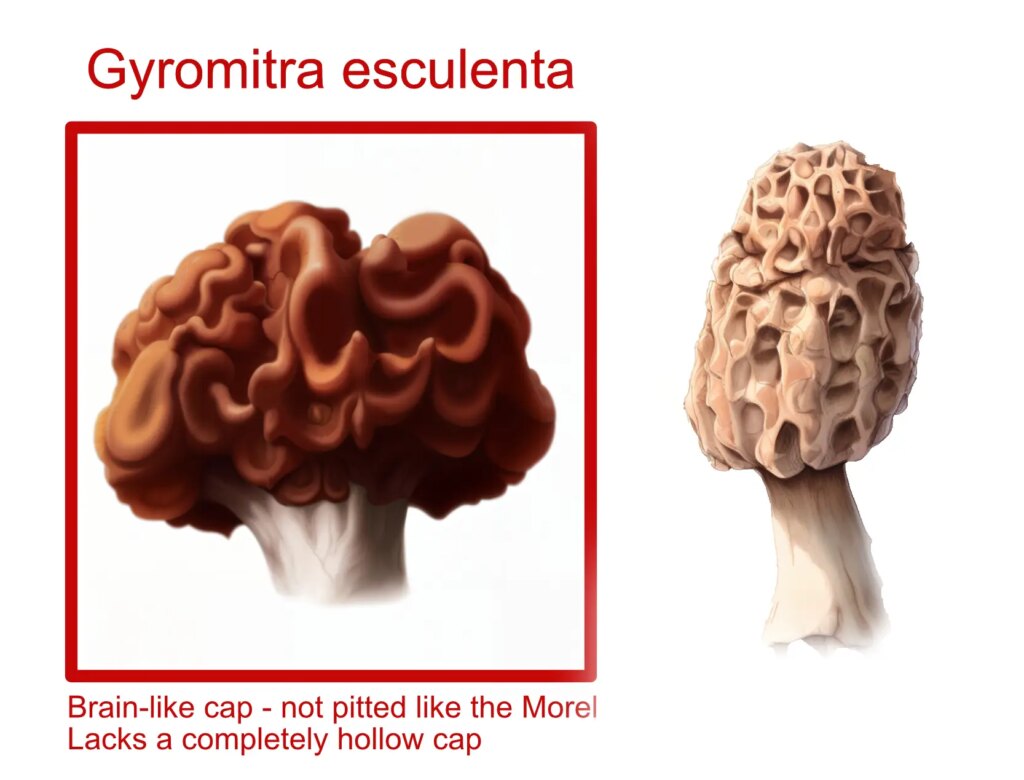
The bottom line is do your homework, exercise extreme caution when identifying, and if in doubt, leave it out. But if harvested safely and ethically, the Morel mushroom can be an exceptional seasonal treat for the mushroom hunter. Delight in!
How to Dry Morel Mushrooms
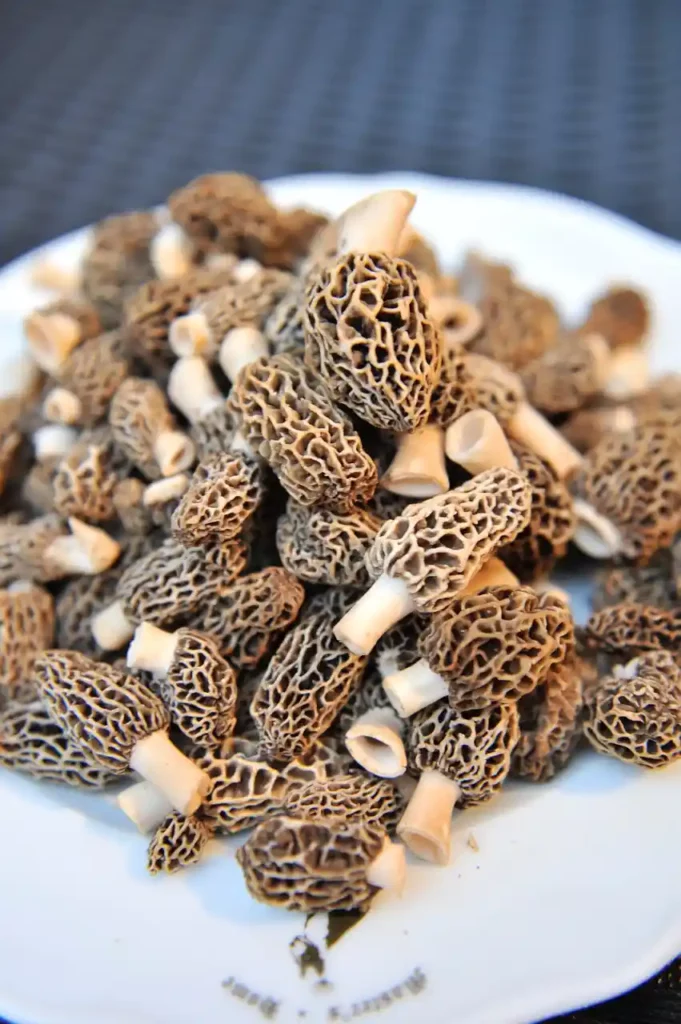
If you have found a trove of morels, you are in luck. This article outlines the steps to dry wild mushrooms, including morels. The process works for all types of mushrooms. The process of ensuring that the prized morels can be enjoyed for many meals to come will now be explained.
Disclaimer: I’m not liable for any sickness or incorrect ID that could result from using this information. Mushroom hunting can be risky if you’re inexperienced. Only collect mushrooms under the guidance of an expert.
Please note that the information provided is based on the description and may not be exhaustive. It’s always important to exercise caution and consult reliable sources or experts when foraging for mushrooms.
Images:
- Image resource for illustrations (based and worked upon)
- The photographs of the morel mushrooms basket were taken by the well-known Austrian mushroom expert Mag. Anton Sgaga
Great resources to learn more about magnificent Morel mushrooms:
Speisemorchel 123pilzsuche
Common Morel mushroom
False Morel Mushrooms
Morel Mushroom Identification
Gyromitra esculenta and Gyromitra gigas

